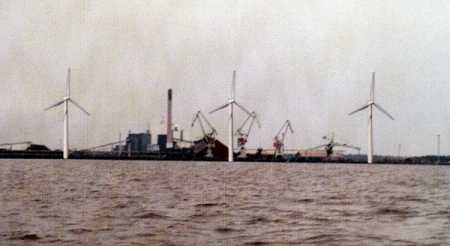|
Fri, 04 Sep, 2015 01:45:42 AM FTimes Report, Sept 4  Wind power plant in Pori. File Photo Lehtikuva. The government on Thursday put forward a proposal to Parliament for amending the act on production subsidy for electricity produced from renewable energy sources.
In the future, the acceptance of wind power into the total capacity of the feed-in tariff system (2,500 megavolt amperes) would require a quota decision which would not remain in force beyond 1 November 2017, said an official press release.
The offshore wind power plant of Tahkoluoto in Pori, an experimental project, would nevertheless be accepted into the feed-in tariff system without a quota decision.
The nominal output of wind power capacity accepted into the feed-in tariff system is currently nearly 1,000 megavolt amperes (MVA).
Quota decisions have been made for nearly 900 MVA of nominal output. Applications for quota decisions are pending for about 1,390 MVA and of these a positive decision could come for about 600 MVA.
However, some of the projects for which a quota decision has been made will not be implemented, for reasons including a delay in the project, which means that the total capacity accepted into the feed-in tariff system is falling below 2,500 MVA.
The aim of the proposal is, in accordance with the government programme, to reduce spending in the state budget on production subsidies for wind energy. The growth in expenditure for production subsidies for land-based wind power plants is expected to stop as of 2018.
With the experimental project for a sea-based wind power plant, the costs would continue to grow to some degree still in 2019. Estimated savings from the changes would be euro 70 to 80 million in 2020.
The goal set by the EU for renewable energy in Finland for the year 2020 is not in jeopardy, even though the increase in wind energy achieved through the feed-in tariff system is falling below the originally planned 6 terawatt hours.
The feed-in tariff system has clearly served as an incentive for developing wind power projects and launching investments. The present system can no longer be considered a sufficiently cost-effective and market-oriented incentive system. Developing the new support system in accordance with the Government programme will begin in the autumn of 2015.
The aim is to increase the share of emission-free renewable energy to more than 50 per cent in the 2020s. The subsidy, which calculates the increase in renewable energy, and which meets the EU guidelines, is based on technology neutrality and the order of economic feasibility.
More News
|
|
Finland Times
| Wednesday, 24 April, 2024 |

